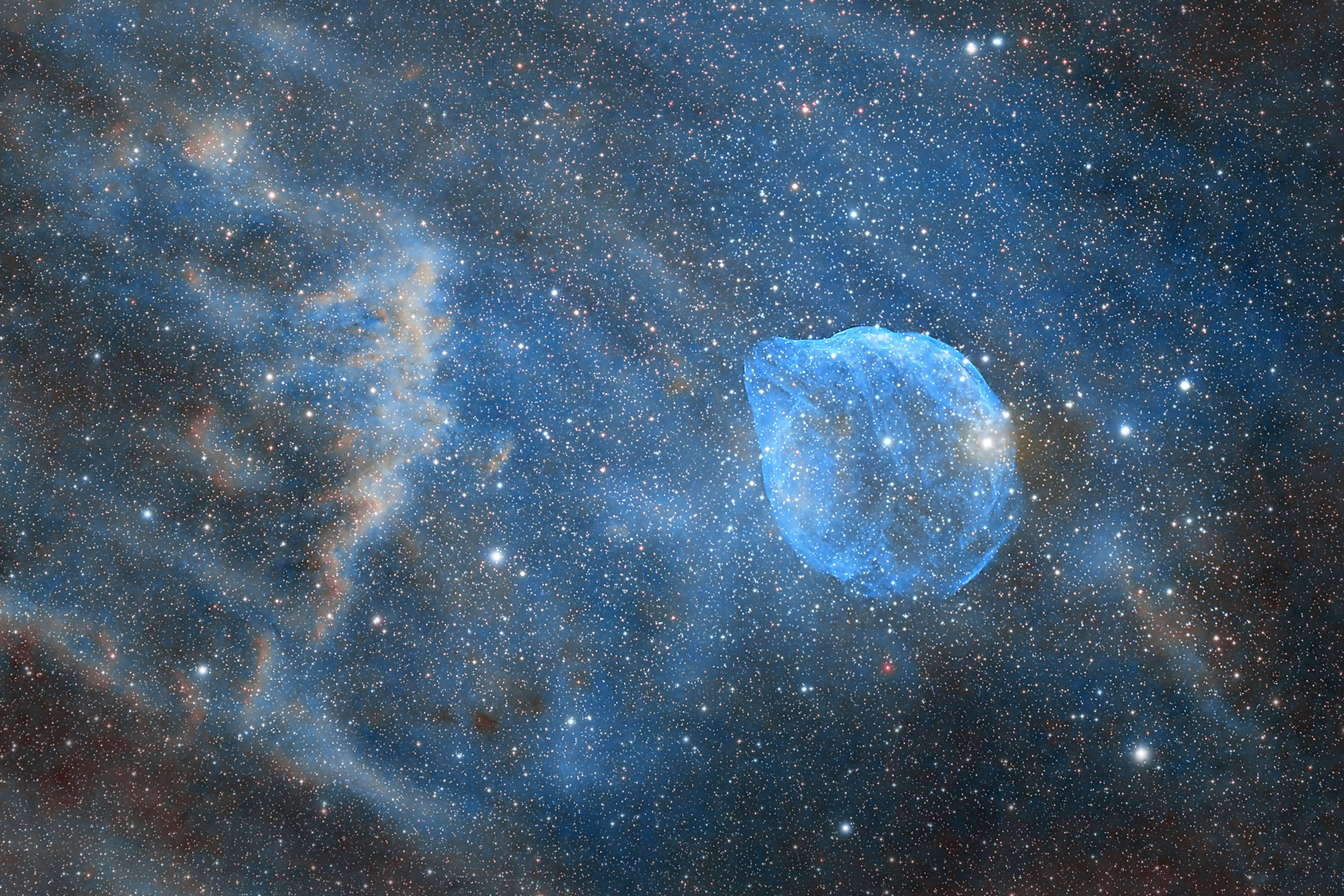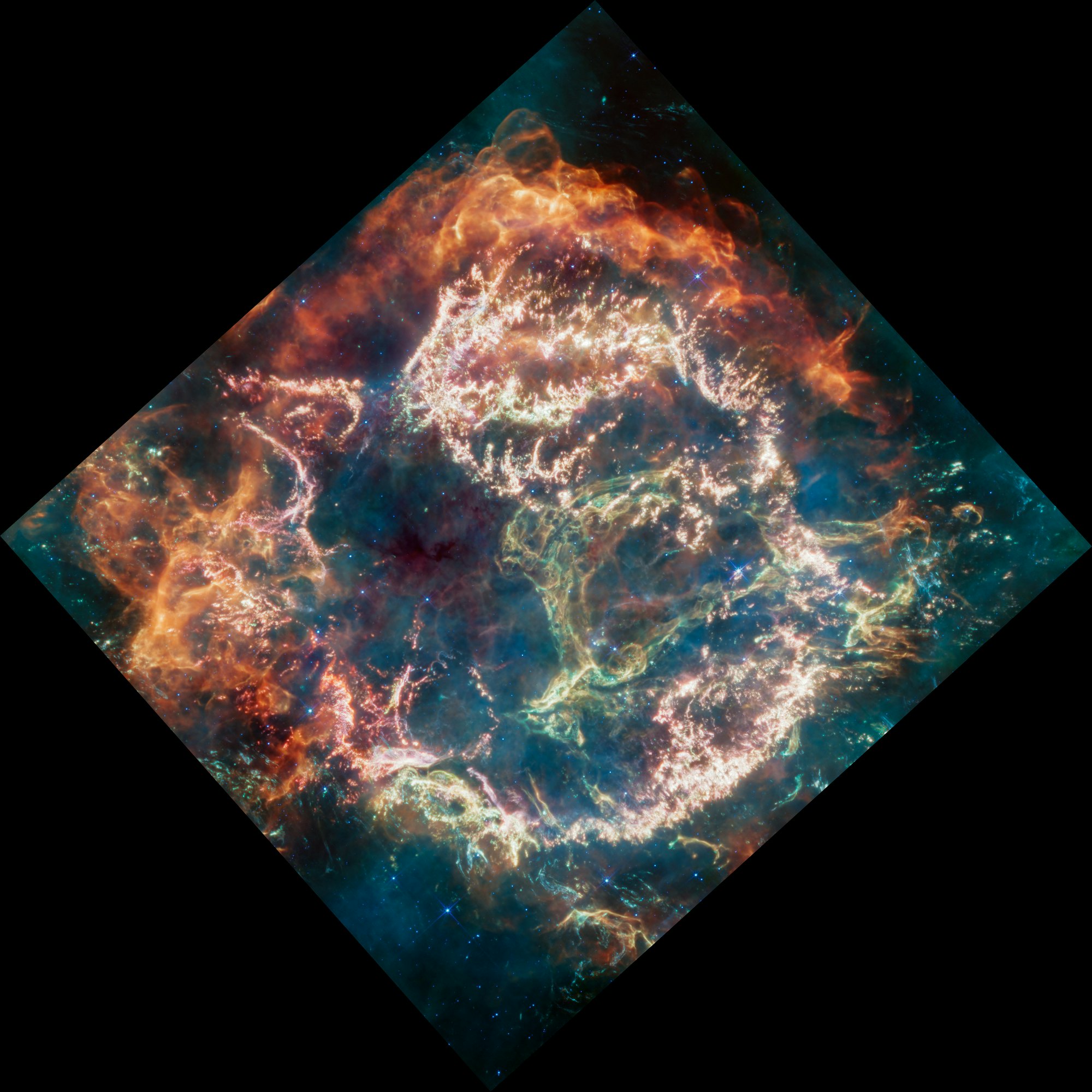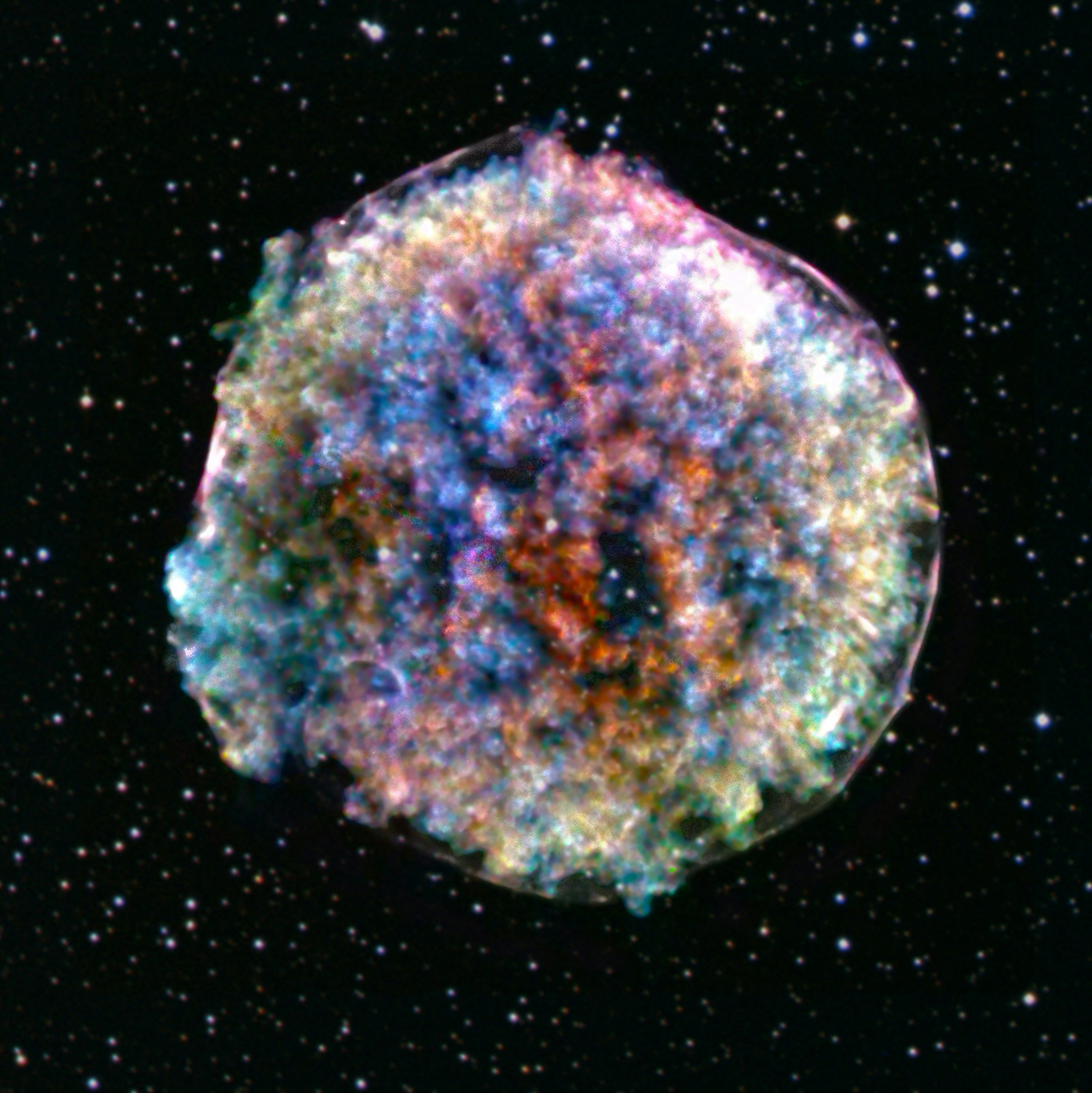
Few things have more influence in the cosmos than the most violent celestial death we know of: the supernova. These stellar finales are so extreme that not only do they shape the space directly around them and nearby galaxies, but they explode with such force that they forge new, heavier elements than they contained before. These cosmic blasts often spit out their material, spreading the star's guts, dust, and gas speeding out in all directions for light years.
As a result, supernovae and their byproducts have played a major role in the creation of new stars and planets, including our own. This connection is just one reason why scientists spend so much time scanning the skies looking for these short-lived bursts.
But studying them can be a challenge. Supernovae don’t happen that often and trying to catch a star on the verge of death is difficult, but astronomers have a hack for getting around such things: performing sky surveys, taking in a big chunk of view of the sky.
Recently scientists from the University of Hawaii completed the largest survey of supernovae yet, called the Young Supernova Data Release. Teams of researchers at the University of Hawaii and the Zwicky Transient Facility spent three years observing the northern hemisphere and collected data on nearly 2000 variable events such as neutron star or black hole mergers.
“In this field it's not unheard of to take a bit of time to collect all the data and then analyze it and then get it set up so it can be shared with the community,” Mark Huber, a senior researcher at the University of Hawaii’s Institute for Astronomy’s Pan-STARRS telescope, tells Inverse.
The trick to trying to understand the function of these deaths is capturing a light curve, which means collecting data at the beginning and the end of the explosion which makes the task even more of a challenge. Scientists mostly look for what are called type 1a supernovae to do this.
The Young Supernova Survey is looking mostly for just that, stars on the verge of death.
“They are trying to catch the first hours or days of a supernova explosion by doing deep observations of a region of sky,” Sanjana Curtis, a postdoctoral scholar in the Department of Astronomy and Astrophysics at the University of Chicago, tells Inverse. “They schedule their observations one day before another survey looks at the same location in order to maximize their chances of discovering a young supernova.”

A Catalog of Dead Stars
In addition to capturing these rare last stellar moments, the Pan-STARRS telescope and the Young Supernova Survey in particular collected data on these objects' red wavelengths, which can tell astronomers how old and how far away the explosions are. When light is stretched and moving away from us, it falls towards the red part of the light spectrum, this is the first time a supernova survey has collected such data. NASA’s James Webb Space Telescope has tried looking for supernovae, but hasn’t been successful yet; there is potential to do follow-up observations using its infrared instruments.
Their timing is perfect. The Vera Rubin Observatory, previously known as LSST, is due to collect its first light in 2023 and officially come online for scientific observations sometime in 2024. Astronomers are prepping for what they’re calling the “era of big data” from the telescope, so having a substantial survey of this kind will serve as a foundation for the observations that Vera Rubin will make in the coming years.
Ultimately, while they play such an important role, there’s still a lot about supernovae that we don’t know, including just what a star's death results in, including what mechanism determines if the star leaves behind a dense remnant called a neutron star or experiences a core collapse, turning into a black hole.
“The explosion mechanism of core-collapse supernovae is still not fully clear because these stars explode in different ways,” Curtis says. “And we don't even know for sure that, you know, say the stars 24 times the mass of the Sun, is it going to explode? Or is it going to become a black hole? That is not something that we know yet.”
The YSE and Pan-STARRS survey is a step in unlocking some of these key questions and some even bigger than the stars themselves, “Supernovae also shape the galaxies around them and help us understand how the Universe transformed from a dense plasma soup to the complex and dynamic place it is today. They also help us understand the expansion of the Universe,” says Curtis.
Perhaps not surprisingly, understanding the extreme physics of the Universe is hard to do from Earth, as Sanjana points out, “Supernovae [are] kind of testbeds for physics in some ways,” she says. “So there are conditions that are produced in supernovae, the birth of neutron stars, for example, it's really physics in regimes that are very difficult to access here on Earth.”

Explosions in the Sky
Of the 2,000 objects in the survey, not all are supernovae. The team captured other major transient events like kilonova which does sound more extreme than a supernova, because it is. When two neutron stars merge or a neutron star collides with a black hole it creates one of the most violent explosions that take place in the cosmos. These events produce massive amounts of gamma radiation giving off a bright beacon of light and a ripple of gravity that morphs the fabric of space-time.
Studying or modeling events like these on Earth just isn’t possible, so surveys like YSE are vital to our understanding of not only the early days of the Universe, but of how the Universe we know today came to be.
Luckily, the team isn't quite done studying the sky. “There'll be a future data release. Hopefully larger, much larger than this,” says Huber.
YSE has about a year left but with the Vera Rubin Telescope coming online next year and the ongoing collaboration between other telescopes, these young supernovae might not remain too elusive for much longer.
After all, these observations reveal much more than just the events of the Universe. “Supernova, the birth of neutron stars, and the equation of state of dense matter inside neutron stars — it really is the Universe and physics pushed to its extremes,” Curtis says.







